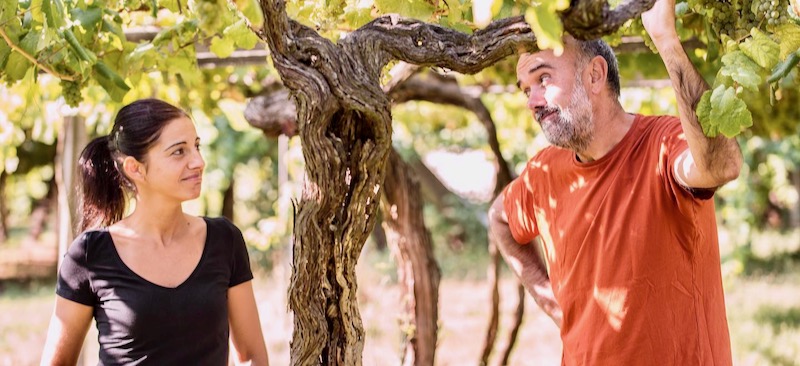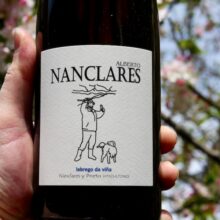
Winery
Nanclares Y Prieto
Meeting Alberto for the first time in 2013, in a Cambados wine bar no less, was something of a similar experience. Alberto seemed at odds with what we knew of the Rías Baixas scene: for starters, he’d been farming organically for over a decade by then, in a region where the conventional wisdom was that the humidity of Rías Baixas made organic farming impossible. He also as a humble, down to earth person. His wines, very much like the man himself, are devoid of clutter, hype or marketing. They’re honest expressions of the lands he farms and for all their lack of guile, there is certainly no lack of complexity.
From the 2016 vintage, Alberto took on young enologist Silva Prieto, whose name was immediately added to the labels. In true Alberto fashion, there was no hesitation in sharing the credit for their wines.
In the Vineyard
We grow the Albariño variety in our fourteen vineyards growing in El Salnés (Rias Baixas). Our vines are aged between 30 and over 100 years old, and have average yields.
We grow our vines according to the principles of minimum intervention, seeking biological balance in the plant, which enables the terroir to express itself.
We fertilize our vineyards with compost made from grape pomace and algae that we collect in the Ría de Arousa, which essentially provide trace elements, minerals and antibiotics which improve the plant’s resistance to disease.
It is essential to have controlled yields and perfectly mature grapes to enable the wines to express the minerality and salinity of our land. We carry out “green harvesting” to help the bunches of grapes to reach optimal maturity – removing vegetation (leaf thinning), eliminating those grape clusters which are not going to ripen properly (cluster thinning) and removing unsuitable grapes (pre-harvesting).
Nanclares y Prieto average around 6,000 kilos per hectare, a little more than half the regional average.
In O Saviñao, we cultivate two vineyards in close collaboration with Roberto Regal. They are located on Miño’s slopes with vines over 100 years old, with 60% gradient, granitic soils and Atlantic climate. The varieties are mencía, garnacha tintorera, grao negro, godello, palomino and others unidentified. Their performances are low and produced by organic viticulture.
In Ribeiro, we elaborate wine in collaboration with Avia do Cume. The vineyards are located in Ribadavia, at an altitude up to 400 meters with clay soil and schistose and granitic nature. Varieties: brancellao, caiño longo, sousón, ferrón, carabuñeira and merenzao. They are produced by organic viticulture.
In the Winery
In the winery, their approach is to respect the grapes as much as possible, intervening as little as possible in the winemaking process, using no additives, apart from moderate doses of sulphur. Bottling is carried out late without fining.
Harvesting is staggered, depending on the grapes’ maturity in each vineyard. A selection of the clusters is carried out in the vineyards and these are then transported to the winery in 15 kg crates, preventing damage to the grapes and the loss of juice.
The grapes from each vineyard are fermented separately in order to preserve their individual identity. The grapes are pressed whole and only the must which will ferment in stainless steel is settled, but not the must which will ferment in wood. Each vat ferments with its own yeasts, without the use of a starter culture which could homogenize the wines.
The wood used to ferment the single parcel wines is French oak previously used at least five times and with a capacity between 400 and 2,200 litres.
The wines ferment in the barrels where they then remain on their lees until the following harvest.
We like to look for new ideas on how to produce from the past. In red wines we are returning to the traditional grape treading as a way of breaking them in a softer way, without damaging the stalk, avoiding the greenery and astringency intakes to the wines, and recovering grapes traditional blends in each plot or the use of wooden chestnut barrels
Where in the World is Nanclares y Prieto?
Nanclares y Prieto is in the Val do Salnés sub-zone of Rías Baixas known as the birthplace of the Albariño grape. Located on the Atlantic coast in the north west corner of spain, it surrounds the historic town of Cambados. This is the original and oldest sub-region with the most area under vine and the highest concentration of wineries.
